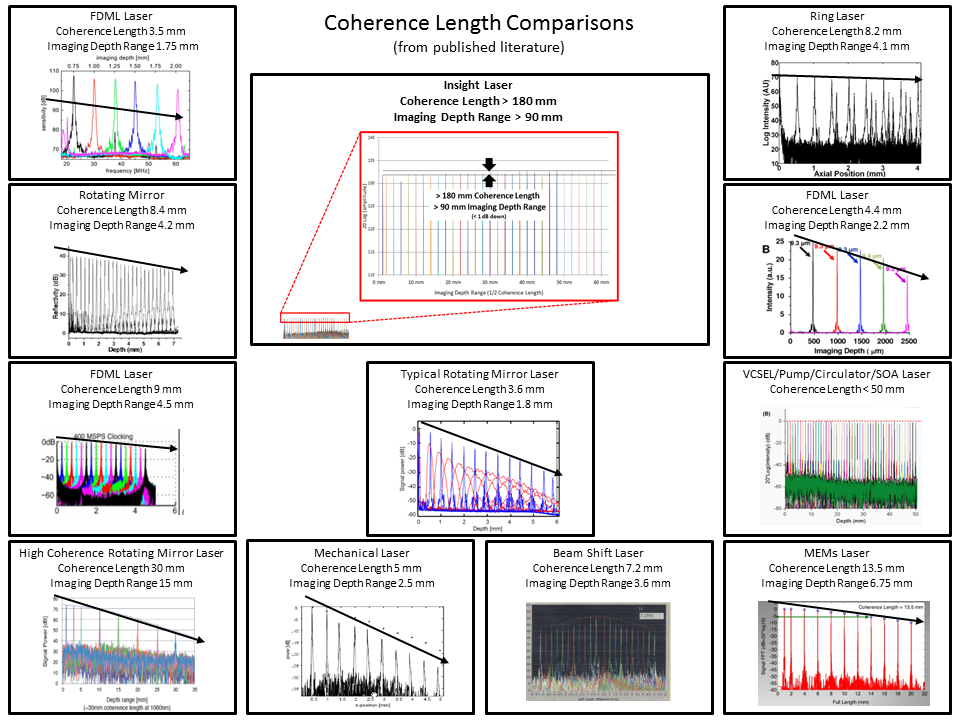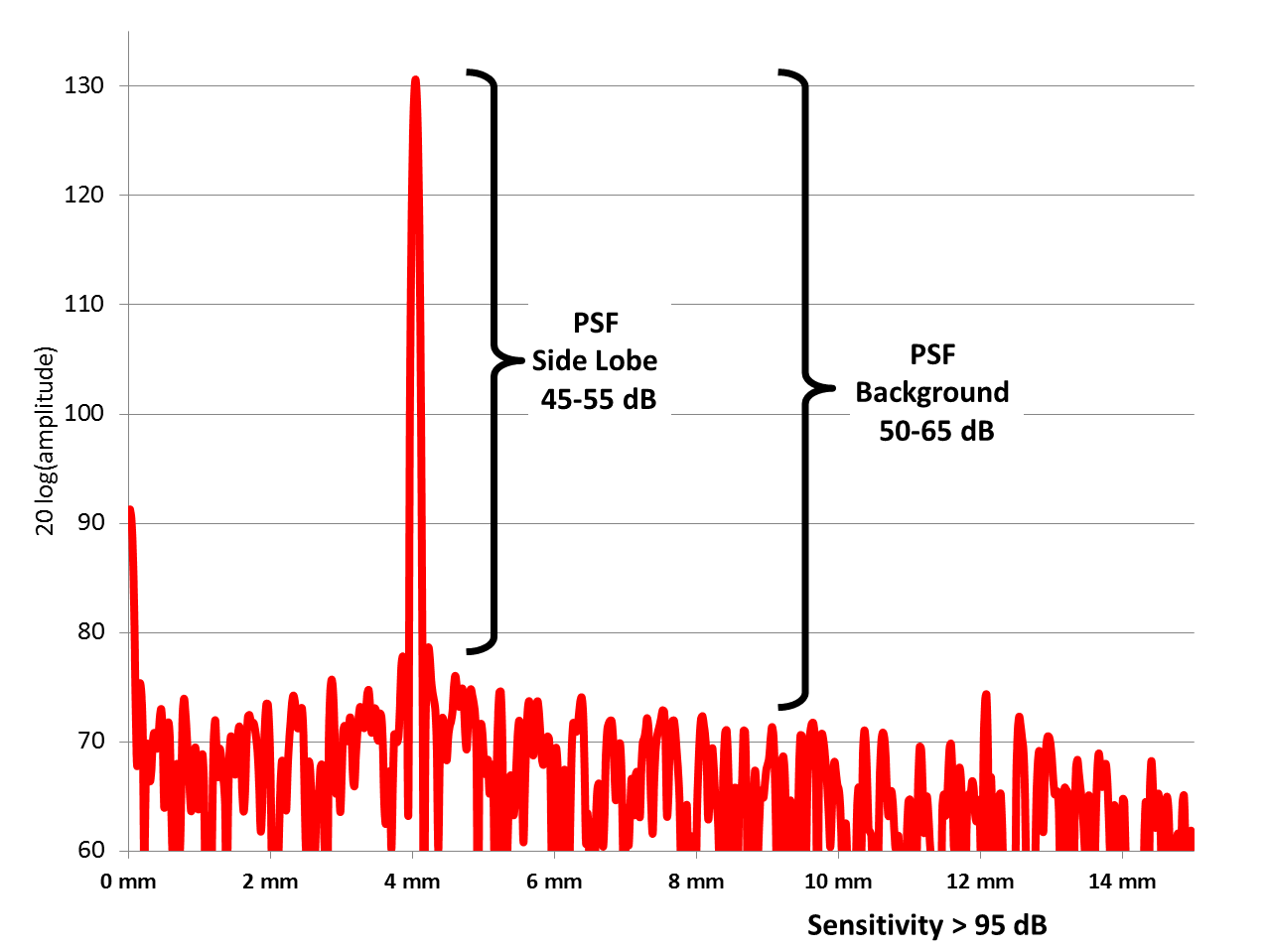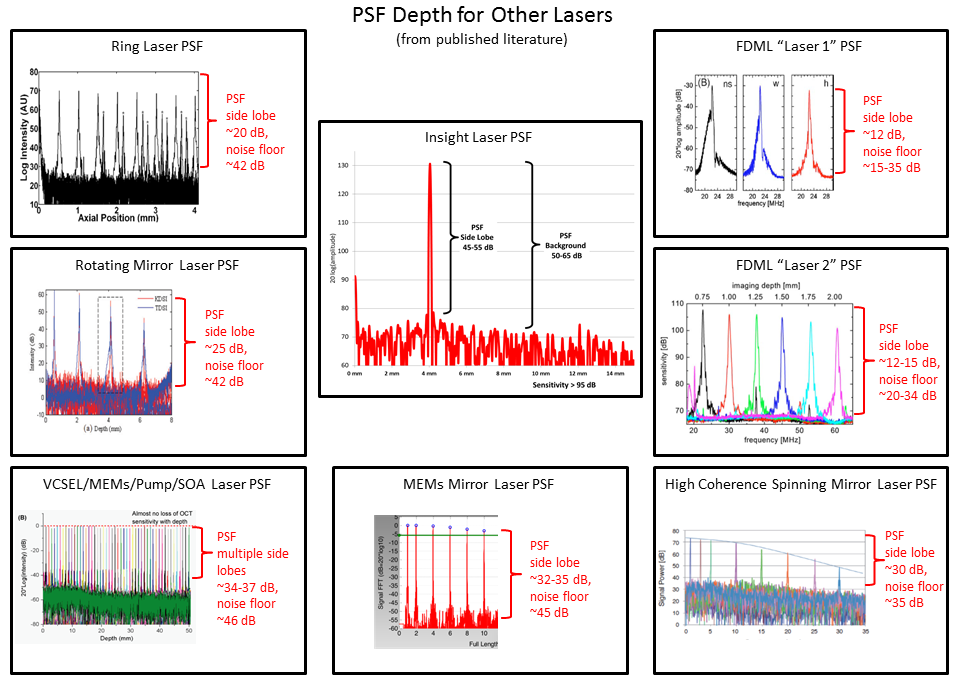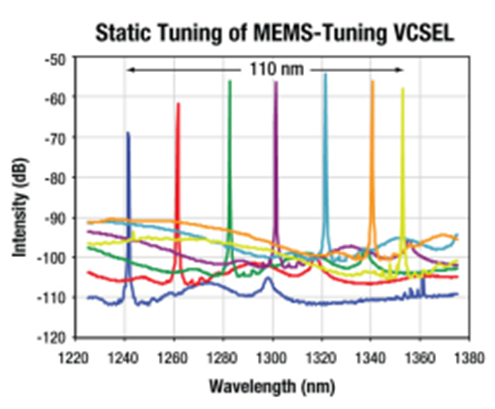Clean Optical Performance
Clean Optical Performance |
. . . Why Clean Optical Performance Matters |
|---|---|
|
|
Single Longitudinal Mode |
|
|---|---|
|
The entire optical cavity is less than 2 mm long and consists of a fully-integrated semiconductor structure. The light is constrained to operate in a single longitudinal mode, resulting in a very clean optical spectrum. Read more on RIN, SMSR, and polarization implications here. |
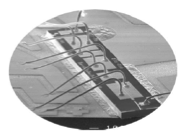 |
Dynamic Coherence Length >180 mm (90 mm Imaging Depth Range) |
||
|---|---|---|
|
Typical obstacles to long coherence length are finesse of the cavity and time-based shifting of center wavelength. The Insight laser cavity is very short, minimizing the mechanical variation that limits coherence length. The mirror penetration inherent in Insight's DBR-like structure increases the finesse by a factor of approximately nine times, thus creating a much narrower linewidth. Results for the laser are shown below. The coherence length is in excess of 180 mm (approximatley 7.2 in, linewidth of 1.7GHz, or 9.5 pm at 1310 nm).
|
||
|
Insight coherence length test data
|
||
|
Coherence length test apparatus
|
||
|
A comparison with published coherence lengths of other lasers
|
||
|
Another factor that can change coherence length in some lasers is the sweep rate. Typically, a faster sweep rate implies a lower coherence length. As you can see from the following chart, sweep rate has very little effect on the Insight laser's coherence length. You will get about the same coherence whether you run at 2k sps, 10k sps, 50k sps, or 200k sps. |
||
|
FRINGE AMPLITUDE GRAPH COMING SOON Coherence length test at different sweep speeds
|
||
|
The following plots are the PSFs at different sweep rates: |
||
|
Upcoming PSF 8 kHz |
Upcoming PSF 50 kHz |
Upcoming PSF 50 kHz |
|
For reference, the static coherence length of the laser is in the tens of meters while being controlled and in the hundreds of meters without excitation. |
||
Clean Point Spread Function |
|
|---|---|
|
The entire optical cavity is less than 2 mm long, consisting of a fully integrated semiconductor structure. The light is constrained to operate in a single longitudinal mode, resulting in a very clean optical spectrum. |
|
|
The Insight laser's PSF is 45-55 dB side lobe supression ratio (PSF SSR)
|
|
|
A comparison with published PSFs of other lasers
|
|
|
The PSF of the Insight laser will not degrade over time because the laser is constantly re-evaluating its own performance and tweaking its drive signals. This ensures optimum linearity and resulting optimal PSF characteristics and image quality. The point spread function is a measure of the ability of the OCT system to image deeply and without ghosting and blur in the image. Specifically, it is the squared amplitude of the FFT of the power spectrum of the reflected signal. The depth of the PSF (difference between the side lobes and the peak) is an indication of the quality of the resulting image. The width of the center is primarily determined by the wavelength range of the laser and is related to the axial resolution of the image. Learn more about the Insight laser’s technology. Performance with a typical OCT system may be limited by the quality of the components in the OCT interferometer. In this instance, narrow side lobes (approximatley 40–42 dB and down) can be generated due to non-idealities in the wavelength-dependent and polarization-dependent characteristics of the interferometer. |
|
SMSR < -47 dB |
|
|---|---|
|
The side mode suppression ratio (SMSR) is shown below. |
|
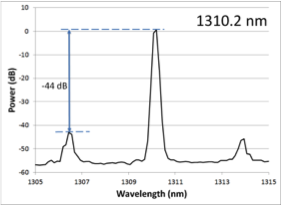 |
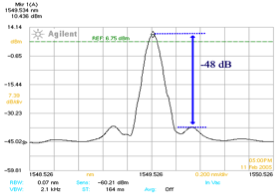 |
| Side lobes at -44 dB at 1310 nm | Side lobes at -48 dB at 1550 nm |
|
The Insight Laser's SMSR of 44 dB compares very favorably with the SMSR of other lasers (which generally hover between 30 and 40 dB). The following chart illustrates the 30 dB SMSR for a MEMs/VCSEL/Pump/SOA-based source. |
|
|
Another laser technology's SMSR |
|
RIN Less Than -138 dB/Hz |
|
|---|---|
|
RIN limits the signal to noise ratio. As consequence, it represents a limit to the sensitivity of the measurement at depth (it is a limit on the depth of measurement). The definition of RIN is the change of the power of the source over time. This can manifest itself as a slower variation from sweep to sweep (which causes image blur) and as high speed noise within a sweep (which reduces the signal-to-noise, which in turn reduces depth of measurement and the resolution). The Insight laser's side mode suppression ratio is shown below. |
|
|
The Insight laser's RIN is less than -140 dB |
|
|
Some lasers with very high RIN compensate with higher power. This is not necessary with the Insight laser. Watch here for additional information on Sliding RIN versus Ortho RIN.
|


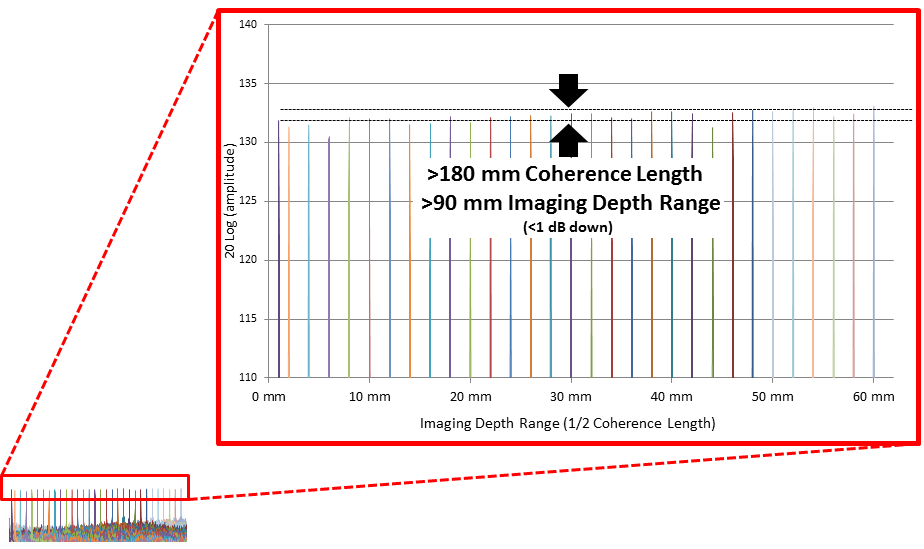
.png)
